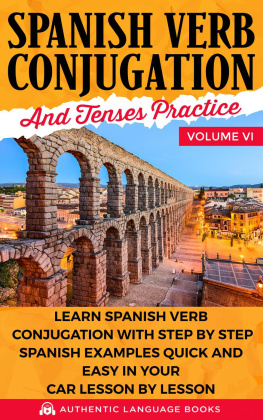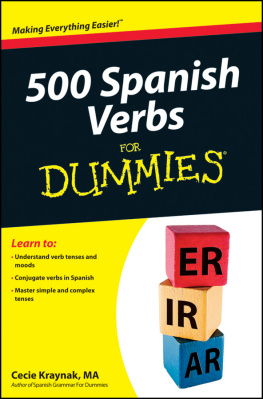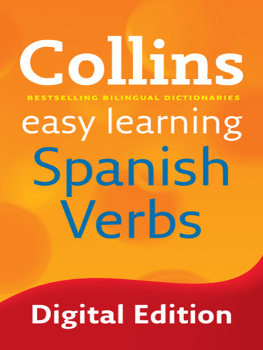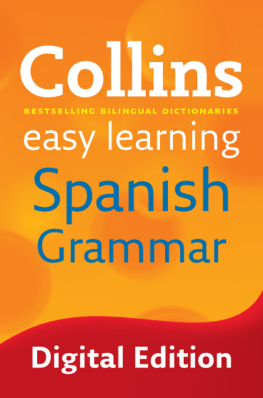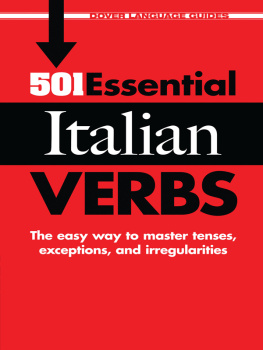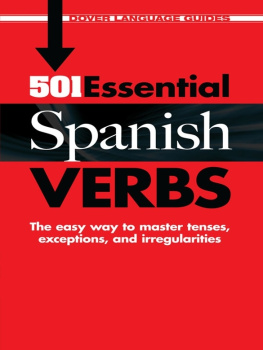

To the memory of
CHRISTOPHER and YOLANDA KENDRIS
With love
Copyright 2017, 2010, 2007, 2003, 1996, 1990, 1982, 1971, 1963
by Barrons Educational Series, Inc.
All rights reserved.
No part of this work may be reproduced in any form or by any means without the written permission of the copyright owner.
All inquiries should be addressed to:
Barrons Educational Series, Inc.
250 Wireless Boulevard
Hauppauge, New York 11788
www.barronseduc.com
eISBN: 978-1-4380-6876-3
Contents
Dr. Christopher Kendris worked as interpreter and translator of French for the U.S. State Department at the American Embassy in Paris. He earned his B.S. and M.S. degrees at Columbia University in the City of New York, where he held a New York State Scholarship, and his M.A. and Ph.D. degrees at Northwestern University in Evanston, Illinois, where he held a Teaching Assistantship and Tutorial Fellowship for four years. He also earned two diplomas with Mention trs Honorable at the Universit de Paris (en Sorbonne), Facult des Lettres, cole Suprieure de Prparation et de Perfectionnement des Professeurs de Franais ltranger, and at the Institut de Phontique, Paris. In 1986, he was one of 95 teachers in the United States who was awarded a Rockefeller Foundation Fellowship for Teachers of Foreign Languages in American High Schools. He taught French at the College of The University of Chicago as visiting summer lecturer, at Colby College, Duke University, RutgersThe State University of New Jersey, and the State University of New York at Albany. He was Chairman of the Department of Foreign Languages and Supervisor of 16 foreign language teachers on the secondary level at Farmingdale High School, Farmingdale, New York, where he was also a teacher of all levels of French and Spanish, and prepared students for the New York State French and Spanish Regents, SAT exams, and AP tests. Dr. Kendris was the author of 22 high school and college books, workbooks, and other language guides of French and Spanish. He was listed in Contemporary Authors and Directory of American Scholars.
Dr. Theodore Kendris earned his B.A. degree in Modern Languages at Union College, Schenectady, New York, where he received the Thomas J. Judson Memorial Book Prize for modern language study. He went on to earn his M.A. degree in French Language and Literature at Northwestern University, Evanston, Illinois, where he held a Teaching Assistantship. He earned his Ph.D. degree in French Literature at Universit Laval in Quebec City, where he studied the Middle Ages and Renaissance. While at Universit Laval, he taught French writing skills as a charg de cours in the French as a Second Language program and, in 1997, he was awarded a doctoral scholarship by the Fondation de lUniversit Laval. Dr. Kendris is the author of Ingls completo: Repaso integral de gramtica inglesa para hispanohablantes, published by Barrons in 2008. He is the coauthor of Spanish Fundamentals and Spanish Verb Conjugations, as well as several other titles published by Barrons. He has also taught in the Department of English and Foreign Languages at the University of St. Francis in Joliet, Illinois, as well as at the Hazleton Campus of Penn State University. He is currently an instructor in the Department of Languages and Cultures at Bloomsburg University, Bloomsburg, Pennsylvania.
This new edition of 501 Spanish Verbs has been updated so that it is easier to use than ever! All of the verb lists that you need are in the back pages of the book with handy tabs so that you can find the list you need quickly and easily. We hope that you will also take the time to practice your conjugations and grammar with verb drills and tests with answers explained on the convenient digital files that you can download as a supplement to this book. The audio program, which is now available conveniently online at http://barronsbooks.com/media/SP6417 , provides a helpful review of the basic conjugations and pronunciation of verb forms. The model verbs themselves have been revised and include extra material for certain Essential Verbs. These are verbs that we believe will be helpful to students because they represent an important conjugation group or because they are useful in many everyday situations and idiomatic expressions. We have also taken into account the many technological advances that have taken place over the past several years, as well as the increased globalization and social change in the 21st century. We have also added new references to the synonyms and antonyms for the verbs in the main list. This feature will help you to explore shades of meaning so that you can develop your spoken and written expression in Spanish. When the synonym or antonym is not in the main list, a model verb is given in parentheses. We hope that 501 Spanish Verbs will continue to provide the guidance that students and travelers like you have come to expect over the years.
We have, therefore, added a number of related words and idiomatic expressions, along with English meanings, at the bottom of every verb page. We also hope that you will take advantage of the section on verb drills and tests with answers explained, beginning . Many students who study a foreign language have problems because they do not understand certain grammatical terms. If you know what they are, what they are called, and how they are used in the grammatical structure of a sentence, you will improve your skill in speaking and writing Spanish.
Dont miss the expanded , is a handy tool if you cant remember the Spanish verb you need to use.
Have you ever wondered what preposition goes with what verb? Many people do. Check out , there is a simple system of sound transcriptions to help you pronounce Spanish words effectively.
Dont forget to study the . We have placed them in one convenient place at the end of the main listing. This gave us room to give you more fully conjugated verbs in the main list.
We hope that you will make full use of all the features of this new edition of 501 Spanish Verbs and that you will enjoy your exploration of Spanish language and culture.
This self-teaching book of 501 commonly used Spanish verbs for students and travelers provides fingertip access to correct verb forms.
Verb conjugations are usually found scattered in Spanish grammar books and they are difficult to find quickly when needed. Verbs have always been a major problem for students no matter what system or approach the teacher uses. You will master Spanish verb forms if you study this book for a few minutes every day, especially the pages before and after the alphabetical listing of the 501 verbs.
This book will help make your work easier and at the same time will teach you Spanish verb forms systematically. It is a useful book because it provides a quick and easy way to find the full conjugation of many Spanish verbs. The synonyms and antonyms listed for each of the model verbs will help you consider other verbs when expressing yourself in Spanish. When the synonym or antonym is not in the main list, a model verb is given in parentheses.
The 501 verbs included here are arranged alphabetically by infinitive at the top of each page. The book contains many common verbs of high frequency, both reflexive and nonreflexive, which you need to know. It also contains many other frequently used verbs that are irregular in some way. Beginning , there are over 2,200 Spanish verbs that can be conjugated in the same way as model verbs among the 501. If the verb you have in mind is not given among the 501, consult this list.
Next page

